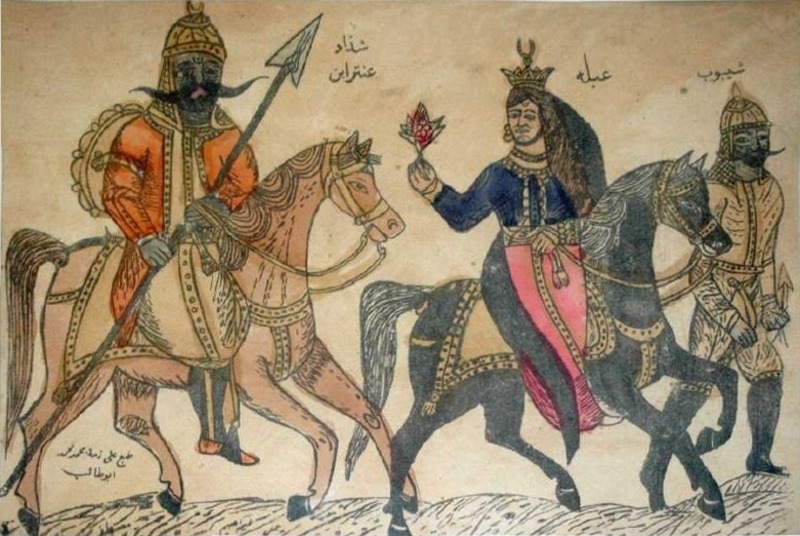Fayl:Antarah ibn Shaddad & Abla.jpg
Antarah_ibn_Shaddad_&_Abla.jpg (800 × 536 piksel, fayl hajmi: 137 KB, MIME tipi: image/jpeg)
Fayl tarixi
Faylning biror paytdagi holatini koʻrish uchun tegishli sana/vaqtga bosingiz.
| Sana/Vaqt | Miniatura | Oʻlchamlari | Foydalanuvchi | Izoh | |
|---|---|---|---|---|---|
| joriy | 18:58, 22-Yanvar 2014 |  | 800 × 536 (137 KB) | Carnby | Better crop |
| 04:01, 29-Mart 2009 |  | 777 × 517 (115 KB) | BomBom | cropped image borders | |
| 22:48, 15-Fevral 2009 |  | 800 × 536 (129 KB) | BomBom | {{Information |Description=A 19th-century tattoing pattern depicting pre-Islamic Arab hero and poet Antarah ibn Shaddad (left) and his lover Abla (middle) riding horses. The character on the right is called Shayyoub. The inscript |
Fayllarga ishoratlar
Bu faylga quyidagi 2 sahifalar bogʻlangan:
Faylning global foydalanilishi
Ushbu fayl quyidagi vikilarda ishlatilyapti:
- ar.wikipedia.org loyihasida foydalanilishi
- شعر عربي
- عنترة بن شداد
- خط الرقعة
- أدب عربي
- ألف ليلة وليلة
- غزل (شعر)
- موسيقى عربية
- حمارة القايلة
- طرب أندلسي
- ثقافة العراق
- عبلة بنت مالك
- حماسة (شعر)
- عصور الأدب العربي
- قالب:ثقافة عربية
- سجاد عربي
- عنترة (مسرحية)
- شيبوب بن شداد
- ثقافة عربية
- مراسم الزواج عند العرب
- مطبخ عربي
- جاز شرقي
- أدب الملحمة العربية
- مستخدم:محمد رشاد ابوالنجا/ملعب12
- فن نبطي
- مستخدم:عمر/ملعب 3
- الفروسية في التاريخ الإسلامي
- مستخدم:EgyAbodggg5g70868
- رموز الشرف عند البدو
- الفن الفاطمي
- جوامع اللذة (موسوعة تراثية)
- مقام (مزار)
- مستخدم:عمر/معلب 4
- قالب:تصفح مقالات مشروع العلمانية والمساواة
- ويكيبيديا:العلمانية والمساواة
- نثر مقفى
- arz.wikipedia.org loyihasida foydalanilishi
- az.wikipedia.org loyihasida foydalanilishi
- bn.wikipedia.org loyihasida foydalanilishi
- bs.wikipedia.org loyihasida foydalanilishi
- ca.wikipedia.org loyihasida foydalanilishi
- da.wikipedia.org loyihasida foydalanilishi
- de.wikipedia.org loyihasida foydalanilishi
Ushbu faylni koʻproq global foydalanishdan koʻring.



